



Table of Contents
- Introduction
- 1. Add a Mirror Wall
- 2. Floating Vanities & Slim Sinks
- 3. Vertical Storage
- 4. Pocket Doors
- 5. Contrasting Colors
- 6. Accent Walls
- 7. Ledges Over Vanities
- 8. Glass Shower Doors
- 9. Toilet Paper Storage
- 10. Round LED Mirror
- 11. Patterned Tiles
- 12. Ceramic Tile Flooring
- 13. Porcelain Tile Flooring
- 14. Stone Tile Flooring
- 15. Concrete Flooring
- 16. Marble Vanity
- 17. Stone & Wood Vanity
- 18. White Ceramic Fixtures
- 19. Glass Shower Enclosure
- 20. Indoor Plants
- 21. Floating Shelves
- 22. Vintage Furniture
- 23. Skylights
- 24. Minimal Finishes
- 25. Soft Lighting
- 26. Vertical Tile Layout
- 27. Mirrored Medicine Cabinet
- 28. Shower Niche
- 29. Vessel Sink
- 30. Wallpaper Accent Wall
- Faq's
Introduction
Designing a bathroom in an Indian home often involves navigating the challenges of limited space while aiming for a stylish and functional environment. With the growing trend of modern living, many homeowners are opting for bathrooms without bathtubs, focusing instead on creating efficient and aesthetically pleasing shower areas. This shift allows for the integration of innovative designs that maximise space and enhance the overall ambiance of the bathroom.
In this article, we explore 30 inspiring Indian bathroom designs that forego the traditional bathtub. Each design concept emphasizes creativity, functionality, and style, showcasing how to make the most of your bathroom space. From clever storage solutions to striking color contrasts, these designs cater to various tastes and preferences, ensuring that your bathroom reflects your personal style while meeting practical needs.
Whether you are renovating an existing bathroom or designing a new one, these ideas will provide you with the inspiration you need to create a beautiful, modern, and tub-free bathroom oasis in 2025. Join us as we delve into the details of each design, offering insights and tips to help you transform your bathroom into a stylish sanctuary.
1. Add a Mirror Wall
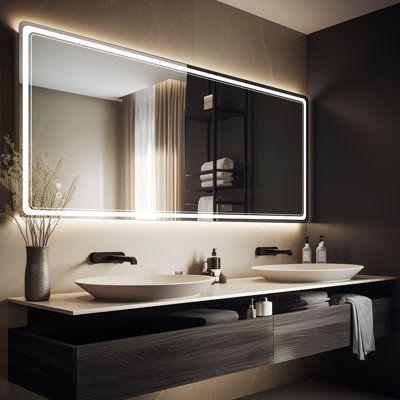 Mirror Wall, Pinterest
Mirror Wall, Pinterest
Mirrors can dramatically alter the perception of space in a bathroom. A mirror wall not only reflects light but also creates an illusion of depth, making the area appear larger than it is. In Indian bathrooms, where space can often be limited, this design strategy becomes particularly valuable.
To implement a mirror wall, consider using large, frameless mirrors that extend from the countertop to the ceiling. This design can be complemented with backlighting or LED strips, which not only enhance the aesthetic appeal but also provide practical lighting for grooming tasks.
Additionally, you can play with shapes and sizes i.e mixing rectangular and circular mirrors can add a playful touch. Consider incorporating decorative elements, such as a framed mirror or a mosaic design made from smaller mirror pieces, to add character.
It's also essential to consider the placement of the mirror. Position it opposite a window or light source to maximize the reflection of natural light. This can create a bright, airy atmosphere that is both inviting and refreshing.
In terms of maintenance, ensure that the mirrors are easy to clean, as bathrooms can accumulate moisture and grime. Regular cleaning will keep the mirrors sparkling and enhance the overall look of the bathroom.
Finally, a mirror wall can serve a dual purpose by incorporating storage options behind it, such as a mirrored cabinet for toiletries. This way, you can maintain a clutter-free environment while enjoying the benefits of a stylish, spacious design.
2. Floating Vanities & Slim Sinks
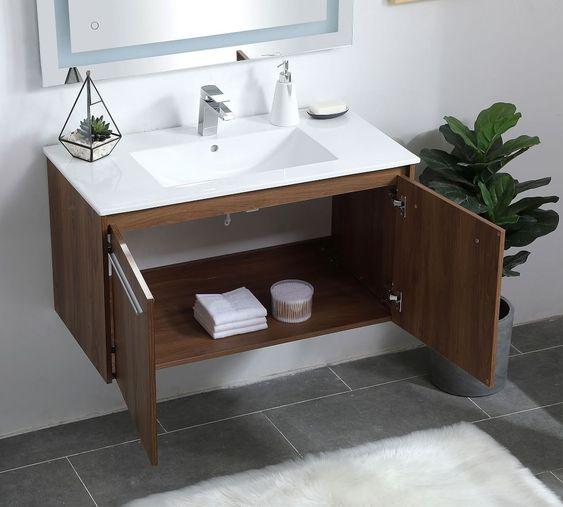 Floating Vanity with Slim Sink
Floating Vanity with Slim Sink
Floating vanities and slim sinks are excellent choices for modern Indian bathrooms, particularly in urban settings where space is at a premium. These designs not only save floor space but also create a contemporary, sleek look that can elevate the overall aesthetic of the bathroom.
Floating vanities are mounted to the wall, leaving the floor space underneath open. This design creates a sense of airiness and makes cleaning the floor much easier. Additionally, it allows for the installation of stylish lighting underneath, which can add a dramatic effect while providing functional illumination.
When selecting a floating vanity, consider materials that are moisture-resistant, such as engineered wood or high-quality laminate. These materials can withstand the humid bathroom environment and maintain their appearance over time. Choose a vanity with drawers or shelves to maximize storage without taking up additional space.
Slim sinks, on the other hand, are designed to occupy minimal space while still providing functionality. Pedestal sinks or wall-mounted sinks are great options, as they do not require bulky cabinets or countertops. These sinks come in various styles, from modern minimalist designs to more traditional looks, allowing you to choose one that fits your overall bathroom theme.
To enhance the design, consider pairing the floating vanity and slim sink with stylish faucets and fixtures. A sleek, modern faucet can add a touch of elegance, while unique sink shapes like oval or rectangular can serve as a focal point.
Incorporating these elements can lead to a beautifully organized and visually appealing bathroom that feels spacious and modern without compromising on functionality.
3. Vertical Storage
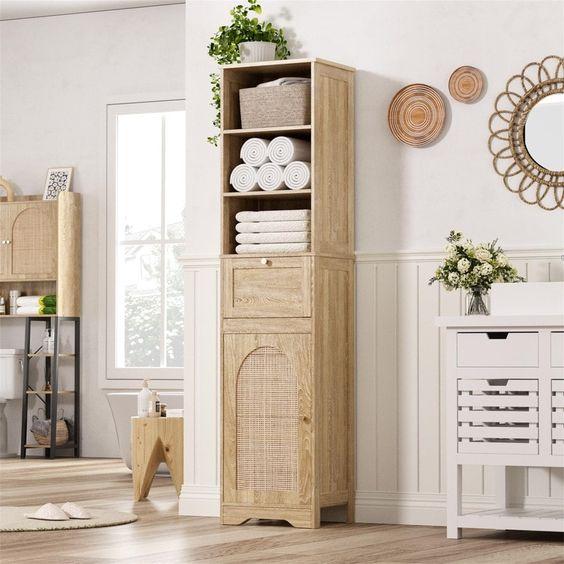
In Indian bathrooms, where space can often be limited, vertical storage solutions are essential for maintaining organization and maximizing functionality. By utilizing wall space effectively, you can keep the floor area clear and create a more open and inviting environment.
One effective way to implement vertical storage is through the use of tall cabinets or shelving units. These can be placed in corners or against walls, providing ample space for storing toiletries, towels, and other essentials. Opt for cabinets that reach the ceiling to make the most of every inch of available space. Consider designs with multiple compartments, allowing for categorized storage and easy access to items.
Open shelving is another popular option that can add a decorative touch to your bathroom. Use floating shelves to display neatly arranged towels, decorative baskets, or potted plants. This not only provides storage but also adds character and warmth to the space.
For smaller items, consider wall-mounted organizers or pegboards. These can hold everything from toiletries to grooming tools, keeping them easily accessible while freeing up counter space. You can also install hooks for hanging towels or robes, further enhancing the storage capacity.
When designing vertical storage, consider the overall aesthetic of the bathroom. Choose finishes and colors that complement the existing decor. For instance, wooden shelves can add warmth to a modern bathroom, while sleek metal shelves can enhance a contemporary look.
Ultimately, vertical storage solutions can transform a cluttered bathroom into a well-organized, stylish space, making it easier to maintain cleanliness and functionality.
4. Pocket Doors
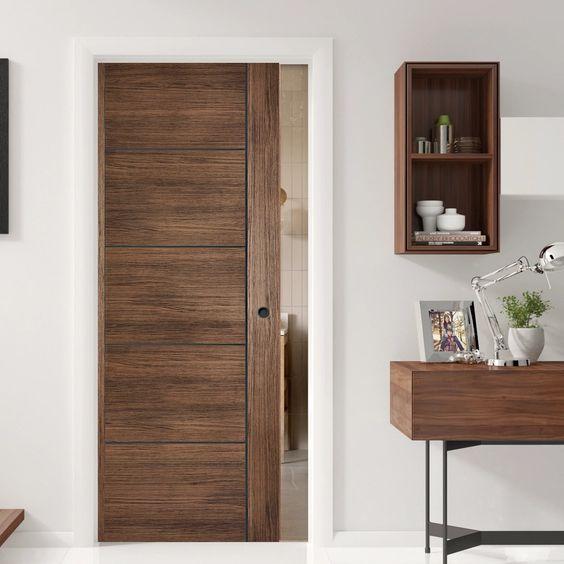
Pocket doors are an innovative solution for maximizing space in small Indian bathrooms. Unlike traditional hinged doors that require space to swing open, pocket doors slide into the wall, allowing for a seamless transition between rooms without sacrificing valuable floor area.
This design is particularly beneficial in compact bathrooms where every inch counts. By eliminating the need for clearance space, pocket doors can make the room feel larger and more open. They can also enhance the flow of the space, creating a more cohesive look.
When considering pocket doors, it's important to choose materials that match the overall decor of your bathroom. Wooden doors can add warmth and a rustic touch, while glass pocket doors can create an airy feel and allow light to flow through. Frosted or textured glass can provide privacy while still maintaining a sense of openness.
Installation of pocket doors requires careful planning, as they need to slide into a wall cavity. This may involve some renovation work, but the end result is worth the effort. Ensure that the wall is structurally sound and that there is enough space within the wall for the door to slide.
Additionally, consider incorporating stylish hardware, such as sleek handles or sliding mechanisms, to enhance the door's aesthetic appeal. The choice of hardware can significantly influence the overall look of the bathroom.
In summary, pocket doors are a practical and stylish solution for small bathrooms, offering both space-saving benefits and a modern aesthetic that can elevate the overall design.
5. Contrasting Colors
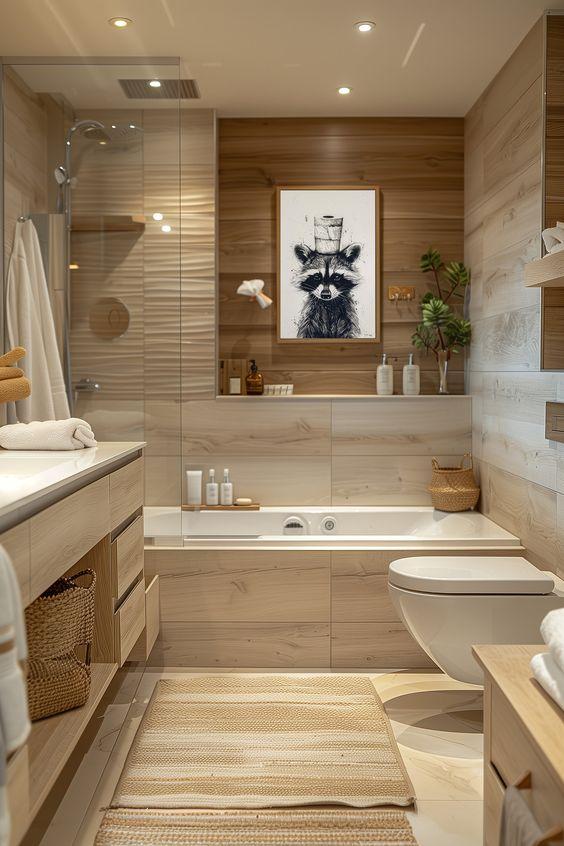
Using contrasting colors in bathroom design can create a striking visual impact, making the space feel dynamic and engaging. In Indian bathrooms, where vibrant colors are often celebrated, this approach can be particularly effective in creating a unique and personalized environment.
To implement contrasting colors, start by selecting a primary color palette. For instance, you might choose soft whites or light pastels for the walls to create a bright and airy atmosphere. Then, introduce darker or bolder colors through flooring, tiles, or accent pieces. For example, pairing light grey walls with deep navy blue tiles can create a sophisticated and modern look.
Another effective way to use contrasting colors is through the vanity and sink area. A white vanity can be paired with a dark countertop, creating a beautiful focal point. Alternatively, you could choose a brightly colored vanity against a neutral backdrop to make it stand out.
When selecting colors, consider the overall mood you want to create. Lighter colors tend to evoke a sense of calm and tranquility, while darker shades can add drama and elegance. You can also incorporate patterns, such as geometric tiles or floral wallpapers, to enhance the contrast and add visual interest.
Lighting plays a crucial role in how colors are perceived, so ensure that your bathroom has adequate lighting to highlight the contrasting elements. Natural light can enhance the vibrancy of colors, while strategically placed artificial lighting can create warmth and depth.
In conclusion, using contrasting colors in your bathroom design can transform the space into a visually stunning area that reflects your personal style while maintaining a sense of harmony and balance.
6. Accent Walls
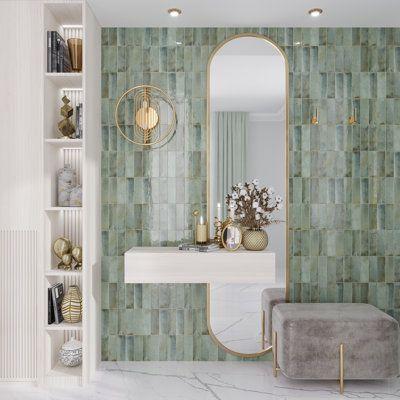 Accent Wall, Pinterest
Accent Wall, Pinterest
An accent wall is a powerful design feature that can add character and depth to a bathroom. By choosing one wall to highlight with a different color, texture, or material, you can create a focal point that draws the eye and enhances the overall aesthetic of the space.
In Indian bathrooms, where traditional elements often blend with modern design, accent walls can be particularly effective. Consider using vibrant colors or intricate patterns that reflect cultural influences. For instance, a wall adorned with traditional Indian motifs or tiles can serve as a beautiful homage to heritage while adding a contemporary twist.
When selecting materials for your accent wall, consider options such as textured tiles, wood paneling, or even wallpaper. Textured tiles can create a stunning visual effect, especially in a shower area, while wood paneling can add warmth and a rustic touch. If you prefer wallpaper, choose designs that are moisture-resistant to ensure durability in a bathroom environment.
Lighting is also crucial when creating an accent wall. Use spotlights or wall sconces to highlight the wall and enhance its features. This can create a dramatic effect, especially in the evening when the bathroom is illuminated.
To maintain balance, ensure that the rest of the bathroom complements the accent wall. Neutral colors for the remaining walls and fixtures can help the accent wall stand out without overwhelming the space.
In summary, an accent wall can be a transformative feature in an Indian bathroom, providing an opportunity for creativity and personalization while enhancing the overall design
7. Ledges Over Vanities
Incorporating ledges over vanities is a practical and stylish way to enhance storage and functionality in Indian bathrooms. These ledges can serve multiple purposes, allowing you to keep essentials within reach while adding a decorative element to the space.
A ledge above the vanity can be used to store everyday items such as toothbrushes, skincare products, and decorative items like candles or small plants. This keeps the countertop clutter-free and organized, which is especially important in smaller bathrooms where space is limited.
When designing the ledge, consider the material and color to ensure it complements the overall aesthetic of the bathroom. A wooden ledge can add warmth and a natural touch, while a glass or metal ledge can create a more modern and sleek look. Ensure that the ledge is wide enough to hold items securely without taking up too much visual space.
In terms of functionality, consider incorporating built-in lighting along the ledge. This can provide additional illumination for grooming tasks while creating a warm, inviting atmosphere. LED strip lights or sconces can be effective options for adding light without taking up valuable space.
Additionally, consider the height and placement of the ledge. It should be easily accessible for daily use but positioned high enough to avoid cluttering the vanity area. This design element can also serve as a decorative display area, allowing you to showcase beautiful toiletries or personal items that reflect your style.
8. Glass Shower Doors
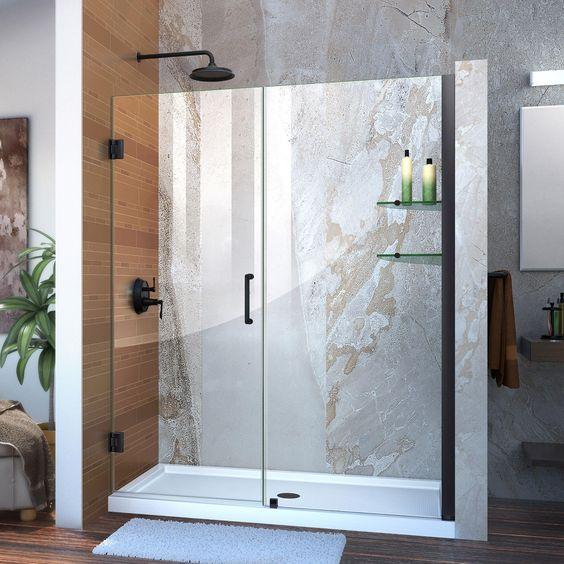 Glass Shower Door, Pinterest
Glass Shower Door, Pinterest
Glass shower doors are an elegant and modern choice for Indian bathrooms, offering a sleek and open feel while enhancing the overall aesthetic of the space. Unlike traditional shower curtains, glass doors provide a clear view of the shower area, making the bathroom appear larger and more inviting.
One of the key benefits of glass shower doors is their ability to allow natural light to flow through the space. This can create a bright and airy atmosphere, which is particularly valuable in smaller bathrooms. Additionally, glass doors can be customized in various styles, including frameless, semi-frameless, or fully framed, allowing you to choose an option that best fits your design preferences.
When selecting glass shower doors, consider the thickness and quality of the glass. Thicker glass is more durable and less likely to shatter, while tempered glass is designed to withstand high temperatures and is less prone to breakage. You can also choose between clear, frosted, or textured glass, depending on your privacy needs and aesthetic preferences.
To enhance the design, consider incorporating stylish hardware, such as sleek handles or hinges. These small details can significantly impact the overall look of the shower area. Additionally, consider the placement of the showerhead and fixtures to ensure that they complement the glass doors and create a cohesive design.
In terms of maintenance, glass shower doors require regular cleaning to prevent soap scum and water spots from building up. Using a squeegee after each use can help keep the glass looking pristine.
9. Toilet Paper Storage
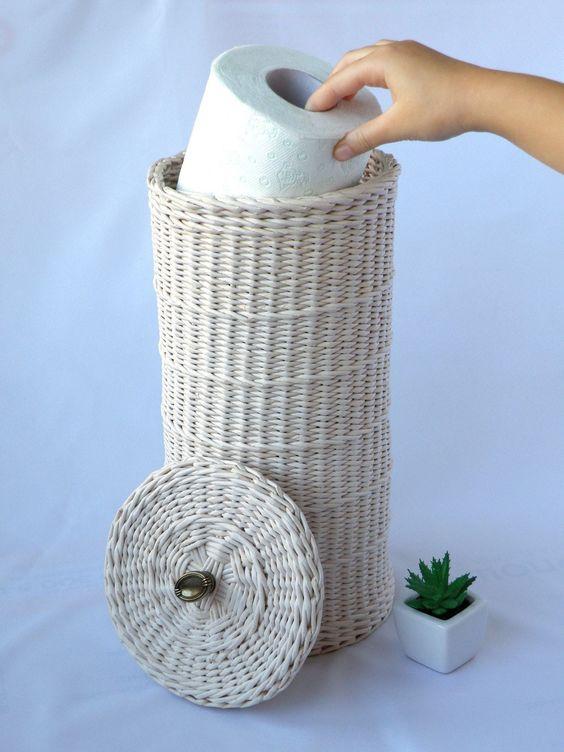 Toilet Paper Storage, Pinterest
Toilet Paper Storage, Pinterest
Efficient toilet paper storage is essential in any bathroom, and in Indian bathrooms, where space is often limited, finding creative solutions can help keep the area organized and clutter-free. There are various stylish and functional ways to store toilet paper without compromising on aesthetics.
One popular option is to use decorative baskets or bins. These can be placed on shelves, under the sink, or even on the floor beside the toilet. Choose materials that complement the overall bathroom decor, such as woven baskets for a rustic look or sleek metal bins for a modern touch. This not only keeps toilet paper accessible but also adds a decorative element to the space.
Another practical solution is to incorporate built-in storage. Consider installing a small cabinet or shelf specifically designed for toilet paper storage. This can be mounted on the wall or tucked into a corner, keeping rolls out of sight while still being easily accessible.
For a more minimalist approach, consider using a toilet paper holder that also serves as a decorative feature. There are various designs available, from wall-mounted holders to free-standing options that can hold multiple rolls. Choose a design that matches the bathroom's style, whether it's rustic, modern, or traditional.
If you have limited floor space, consider vertical storage solutions. Tall, narrow cabinets or shelves can be used to store toilet paper along with other bathroom essentials, maximizing vertical space while keeping everything organized.
10. Round LED Mirror
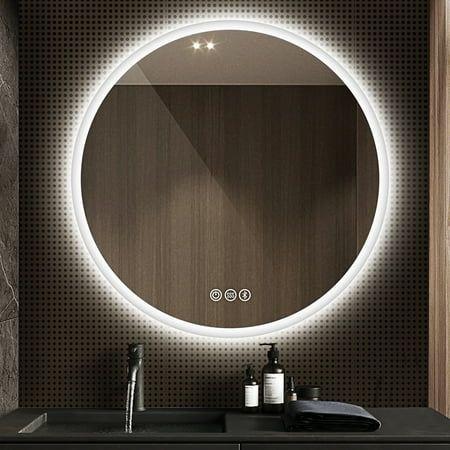 Round LED Mirror, Pinterest
Round LED Mirror, Pinterest
A round LED mirror is a stylish and functional addition to any Indian bathroom, offering a modern touch while providing essential lighting for grooming tasks. These mirrors not only serve as a practical tool for daily routines but also act as a focal point that can elevate the overall design of the space.
One of the key benefits of a round LED mirror is its ability to provide even lighting. The built-in LED lights can illuminate the face, reducing shadows and ensuring that you have adequate visibility for tasks such as shaving, applying makeup, or styling hair. Many LED mirrors also come with adjustable brightness settings, allowing you to customize the lighting to suit your preferences.
In terms of design, round mirrors can soften the lines of a bathroom and create a more inviting atmosphere. They can be paired with various vanity styles, from sleek modern designs to more traditional setups, making them versatile for different decor themes.
When selecting a round LED mirror, consider the size in relation to your vanity and bathroom space. A larger mirror can create a dramatic effect, while a smaller one may work better in compact areas. Additionally, choose a frame that complements the overall aesthetic of the bathroom. Options range from minimalist metal frames to ornate designs that add a touch of elegance.
Installation is straightforward, and many LED mirrors can be hardwired for a clean look, or they can simply be plugged in. Ensure that the mirror is positioned at the right height for easy access and visibility.
11. Patterned Tiles
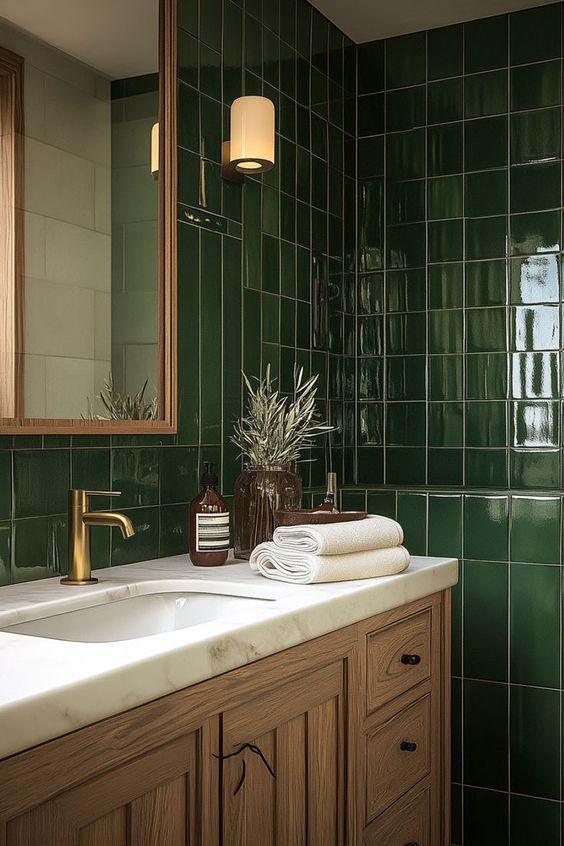 Patterned Tiles, Pinterest
Patterned Tiles, Pinterest
Patterned tiles are a fantastic way to add visual interest and personality to Indian bathrooms. With a rich tradition of intricate designs and vibrant colors, patterned tiles can transform a simple bathroom into a stunning space that reflects cultural heritage while embracing modern aesthetics.
When choosing patterned tiles, consider the style you want to achieve. For a traditional look, opt for tiles that feature classic motifs, such as floral or geometric patterns. These can be used as accent tiles in the shower area, on the floor, or as a backsplash behind the vanity.
For a more contemporary feel, consider bold, graphic patterns or abstract designs. Large-format tiles with striking patterns can create a statement wall, while smaller tiles can be used to create intricate mosaics. The key is to balance the patterns with solid colors to avoid overwhelming the space.
In terms of color, vibrant hues can add energy and warmth to the bathroom, while muted tones can create a calming atmosphere. Consider the overall color scheme of the bathroom when selecting tiles to ensure that they complement other elements, such as fixtures and cabinetry.
When installing patterned tiles, consider the layout carefully. A herringbone or chevron pattern can add visual interest to the floor, while a staggered layout can create a dynamic look on the walls.
Maintenance is also an important consideration. Ensure that the tiles are made from durable materials that can withstand moisture and are easy to clean. Sealing grout lines can help prevent staining and maintain the beauty of the tiles over time.
In summary, patterned tiles are a versatile and visually appealing option for Indian bathrooms, allowing you to express your style while creating a unique and inviting space.
12. Ceramic Tile Flooring
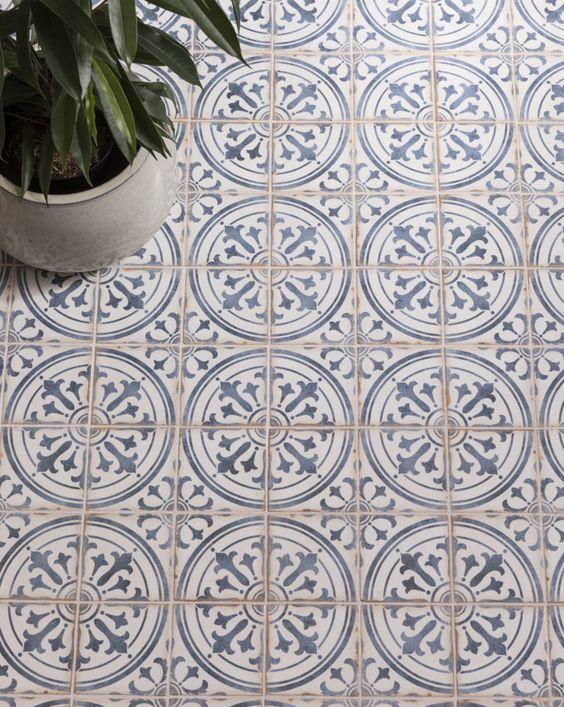 Ceramic Tile, Pinterest
Ceramic Tile, Pinterest
Ceramic tile flooring is a popular choice for Indian bathrooms due to its durability, versatility, and ease of maintenance. With a wide variety of colors, patterns, and finishes available, ceramic tiles can suit any design aesthetic, from traditional to contemporary.
One of the key advantages of ceramic tiles is their resistance to moisture and stains, making them ideal for bathroom environments. They are easy to clean and maintain, requiring only regular sweeping and mopping to keep them looking pristine. Additionally, ceramic tiles are available in various textures, which can provide slip resistance a crucial factor for safety in wet areas.
When selecting ceramic tiles for flooring, consider the size and layout of your bathroom. Larger tiles can create a sense of spaciousness, while smaller tiles can be used to create intricate patterns or designs. You can also mix and match different tile sizes to create a unique look.
In terms of color, ceramic tiles come in a wide range of options, allowing you to choose shades that complement your overall bathroom design. Light-colored tiles can make a small bathroom feel larger and more open, while darker tiles can add depth and sophistication.
To enhance the design, consider using decorative tiles as accents. These can be incorporated as borders, insets, or feature areas within the flooring. This adds visual interest and can create a beautiful focal point in the bathroom.
Finally, ensure that the tiles are properly installed and grouted to prevent water damage and maintain their longevity. Regular sealing of grout lines can help protect against stains and discoloration.
In conclusion, ceramic tile flooring is a practical and stylish choice for Indian bathrooms, offering durability, versatility, and a wide range of design options to suit any style.
13. Porcelain Tile Flooring
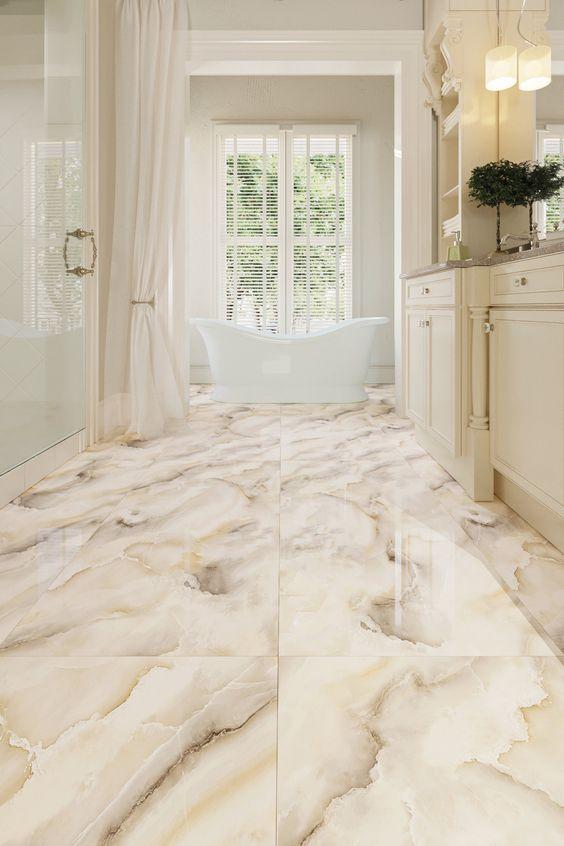 Porcelain Tile Flooring, Pinterest
Porcelain Tile Flooring, Pinterest
Porcelain tile flooring is an excellent choice for Indian bathrooms, offering a high level of durability and a wide variety of design options. Known for its strength and resistance to moisture, porcelain tiles are ideal for the humid conditions often found in bathrooms.
One of the standout features of porcelain tiles is their ability to mimic other materials, such as natural stone or wood. This allows you to achieve the desired aesthetic without sacrificing durability. For example, you can choose porcelain tiles that resemble marble for a luxurious look or wood-effect tiles for a warm, rustic feel.
In addition to their aesthetic versatility, porcelain tiles are also highly resistant to stains, scratches, and moisture. This makes them easy to maintain, requiring only regular cleaning with mild detergents to keep them looking their best. Unlike some other flooring materials, porcelain does not require sealing, making it a low-maintenance option.
When selecting porcelain tiles for your bathroom, consider the size and layout of the space. Larger tiles can create a sense of spaciousness, while smaller tiles can be used to create intricate patterns or designs. You can also mix and match different tile sizes to create a unique look.
In terms of color, porcelain tiles come in a wide range of options, allowing you to choose shades that complement your overall bathroom design. Light-colored tiles can make a small bathroom feel larger and more open, while darker tiles can add depth and sophistication.
To enhance the design, consider using decorative tiles as accents. These can be incorporated as borders, insets, or feature areas within the flooring. This adds visual interest and can create a beautiful focal point in the bathroom.
Finally, ensure that the tiles are properly installed and grouted to prevent water damage and maintain their longevity. Regular sealing of grout lines can help protect against stains and discoloration.
14. Stone Tile Flooring
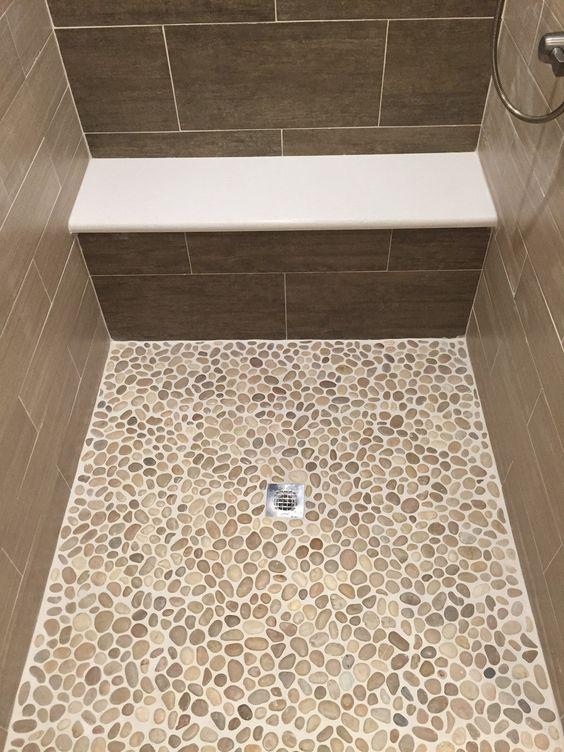 Stone Tile Flooring, Pinterest
Stone Tile Flooring, Pinterest
Natural stone tile flooring is a luxurious and timeless option for Indian bathrooms, adding elegance and sophistication to the space. Stone tiles, such as granite, marble, slate, and travertine, are known for their unique textures and colors, which can enhance the overall aesthetic of the bathroom.
One of the primary benefits of stone tiles is their durability. They are resistant to wear and tear, making them ideal for high-traffic areas like bathrooms. Additionally, stone tiles are naturally cool, which can be particularly pleasant in warmer climates.
When selecting stone tiles, consider the finish. Polished stone tiles offer a glossy, reflective surface that can brighten up the space, while honed or textured finishes provide a more natural, rustic look. The choice of finish can significantly impact the overall feel of the bathroom.
In terms of color, stone tiles come in a variety of shades, from light creams and beiges to deep browns and blacks. This range allows for flexibility in design, enabling you to choose tiles that complement your existing decor. For a cohesive look, consider using the same stone for both flooring and wall accents.
Stone tiles can also be arranged in various patterns, such as herringbone or diagonal layouts, to create visual interest. Additionally, consider incorporating decorative stone insets or borders to enhance the design further.
While stone tiles are durable, they do require some maintenance to keep them looking their best. Regular sealing is necessary to protect against stains and moisture, and periodic cleaning with appropriate stone-safe products will help maintain their appearance.
15. Concrete Flooring
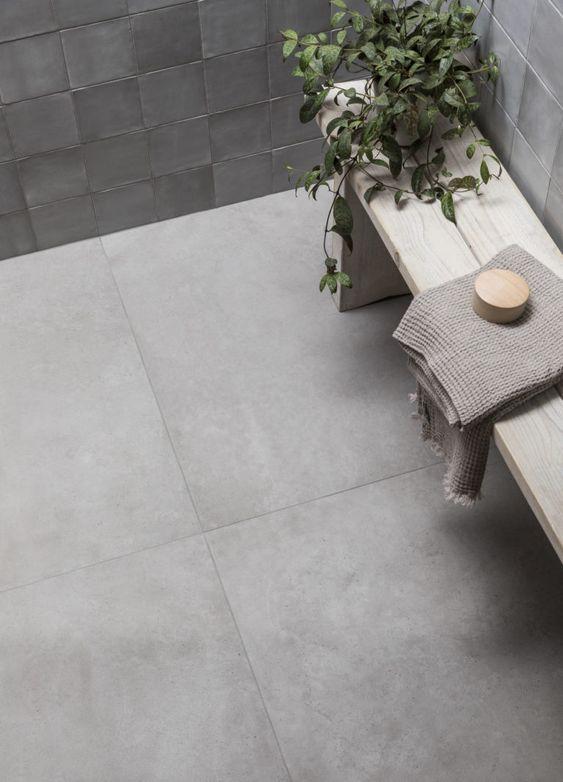
Concrete flooring is an innovative and cost-effective option for Indian bathrooms, providing a modern and industrial aesthetic. This versatile material can be customized in various ways, making it suitable for a range of design style from minimalist to rustic.
One of the primary advantages of concrete flooring is its durability. It can withstand heavy foot traffic and is resistant to moisture, making it an ideal choice for bathrooms. Additionally, concrete is easy to clean and maintain, requiring only regular sweeping and occasional mopping.
Concrete can be poured and shaped to fit any bathroom layout, allowing for seamless transitions between different areas. This creates a clean, uninterrupted look that can enhance the sense of space in smaller bathrooms.
In terms of aesthetics, concrete flooring can be customized with various finishes. Polished concrete offers a sleek, glossy surface that reflects light and adds a modern touch. Stained concrete can introduce color and depth, while stamped concrete can mimic the appearance of natural stone or tile.
To enhance the comfort of concrete flooring, consider adding radiant heating beneath the surface. This can provide warmth during colder months, making the bathroom more comfortable.
In terms of design, concrete can be paired with various textures and materials to create a cohesive look. For example, combining concrete with wooden vanities or natural stone accents can soften the industrial feel and add warmth to the space.
While concrete is durable, it is essential to seal the surface to prevent water absorption and staining. Regular maintenance will ensure that the concrete remains in good condition over time.
16. Marble Vanity
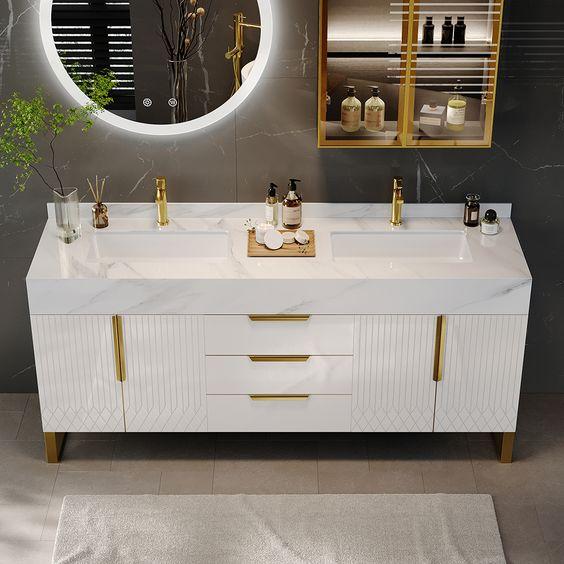 Marble Vanity, Pinterest
Marble Vanity, Pinterest
A marble vanity is a luxurious addition to any Indian bathroom, providing both elegance and functionality. Known for its timeless beauty, marble can elevate the overall aesthetic of the space while offering a durable surface for daily use.
When selecting a marble vanity, consider the color and veining patterns. White marble with grey veining is a classic choice that complements a variety of design styles, while darker marbles can add drama and sophistication. The unique patterns in marble ensure that each piece is unique adding character to your bathroom.
In terms of design, a marble vanity can be paired with various styles of cabinetry. For a modern look, consider sleek, minimalistic cabinets that allow the marble to take center stage. Alternatively, ornate wooden cabinetry can create a more traditional or rustic feel.
Functionality is also key when designing a marble vanity. Ensure that the vanity has ample storage space for toiletries and other essentials. Drawers and shelves can help keep the area organized and clutter-free.
To enhance the luxury of a marble vanity, consider incorporating high-quality fixtures. A stylish faucet in a complementary finish such as brushed gold or polished chrome can add a touch of elegance. Additionally, consider adding decorative elements, such as a statement mirror or stylish lighting, to create a cohesive and inviting space.
While marble is a durable material, it does require some maintenance to keep it looking its best. Regular sealing is necessary to protect against stains and moisture, and gentle cleaning products should be used to avoid damaging the surface.
In summary, a marble vanity is a stunning and functional choice for Indian bathrooms, offering elegance, durability, and a timeless appeal that can enhance the overall design of the space.
17. Stone & Wood Vanity
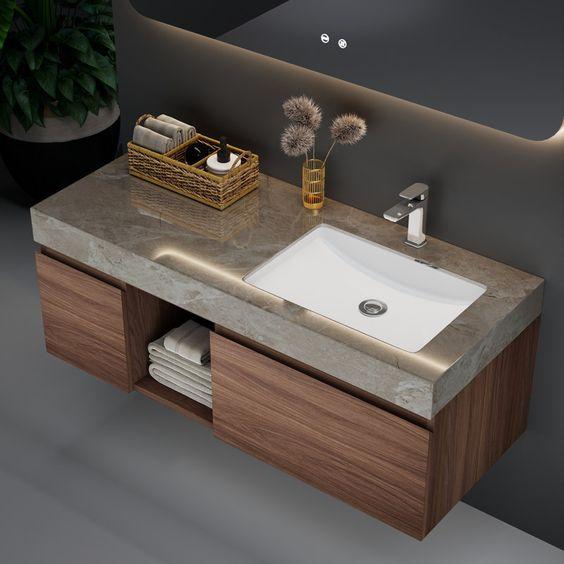
Combining stone and wood in a vanity design can create a beautiful and harmonious look in Indian bathrooms. This combination offers the durability of stone with the warmth and natural beauty of wood, resulting in a balanced and inviting space.
When designing a stone and wood vanity, consider using a stone countertop, such as granite or marble, paired with wooden cabinetry. The contrast between the cool, hard surface of the stone and the warm, organic texture of the wood can create a visually stunning focal point in the bathroom.
In terms of color, choose wood finishes that complement the stone. Lighter woods, such as oak or maple, can create a fresh and airy feel, while darker woods, like walnut or mahogany, can add depth and richness to the space. The choice of wood can significantly influence the overall aesthetic, so consider the existing decor when making your selection.
Functionality is also important when designing a stone and wood vanity. Ensure that the cabinetry provides ample storage for toiletries and other essentials. Consider incorporating drawers, shelves, and even open storage for decorative items or plants.
To enhance the design, consider adding stylish hardware that complements both the stone and wood elements. Brushed metal or antique finishes can add a touch of elegance, while minimalist designs can create a modern look.
In terms of maintenance, both stone and wood require care to keep them looking their best. Regular sealing of the stone surface is necessary to protect against stains, while wood should be treated with appropriate finishes to maintain its appearance and durability.
In conclusion, a stone and wood vanity is a stylish and functional choice for Indian bathrooms, offering a beautiful combination of materials that can enhance the overall design while providing practicality and warmth.
18. White Ceramic Fixtures
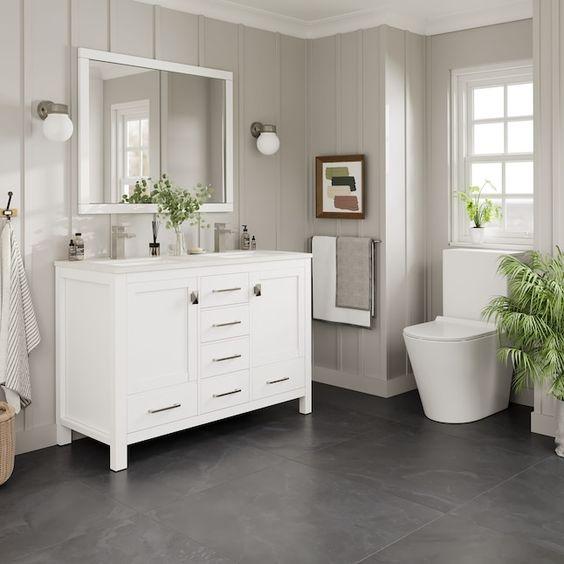 White Ceramic Fixtures, Pinterest
White Ceramic Fixtures, Pinterest
White ceramic fixtures are a timeless and versatile choice for Indian bathrooms, offering a clean and classic look that complements any design style. From sinks and toilets to bathtubs and vanities, white ceramic fixtures can create a cohesive and bright atmosphere in the bathroom.
One of the primary benefits of white ceramic fixtures is their ability to blend seamlessly with various color schemes and materials. Whether your bathroom features bold colors, intricate patterns, or minimalist designs, white fixtures can provide a neutral backdrop that enhances the overall aesthetic.
In terms of functionality, ceramic fixtures are known for their durability and ease of maintenance. They are resistant to stains and moisture, making them ideal for bathroom environments. Regular cleaning with mild detergents is typically all that is needed to keep them looking pristine.
When selecting white ceramic fixtures, consider the style and shape that best fits your bathroom design. Sleek, modern fixtures can create a contemporary look, while more traditional shapes can add a touch of elegance and charm.
To enhance the design, consider pairing white ceramic fixtures with stylish hardware and accessories. For example, a modern faucet in a contrasting finish can create a striking focal point, while decorative elements such as mirrors and lighting can add character to the space.
Additionally, consider incorporating colorful or patterned tiles as accents to break up the monotony of white fixtures. This can create visual interest and enhance the overall design of the bathroom.
19. Glass Shower Enclosure
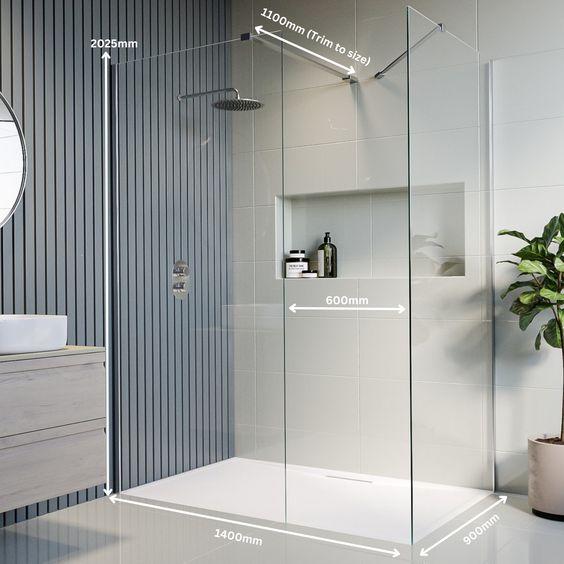 Glass Shower Enclosure, Pinterest
Glass Shower Enclosure, Pinterest
A glass shower enclosure is an elegant and modern choice for Indian bathrooms, providing a sleek and open feel while enhancing the overall aesthetic of the space. Unlike traditional shower curtains, glass enclosures offer a clear view of the shower area, making the bathroom appear larger and more inviting.
One of the key benefits of glass shower enclosures is their ability to allow natural light to flow through the space. This can create a bright and airy atmosphere, which is particularly valuable in smaller bathrooms. Additionally, glass enclosures can be customized in various styles, including frameless, semi-frameless, or fully framed, allowing you to choose an option that best fits your design preferences.
When selecting a glass shower enclosure, consider the thickness and quality of the glass. Thicker glass is more durable and less likely to shatter, while tempered glass is designed to withstand high temperatures and is less prone to breakage. You can also choose between clear, frosted, or textured glass, depending on your privacy needs and aesthetic preferences.
To enhance the design, consider incorporating stylish hardware, such as sleek handles or hinges. These small details can significantly impact the overall look of the shower area. Additionally, consider the placement of the showerhead and fixtures to ensure that they complement the glass enclosure and create a cohesive design.
In terms of maintenance, glass shower enclosures require regular cleaning to prevent soap scum and water spots from building up. Using a squeegee after each use can help keep the glass looking pristine.
20. Indoor Plants
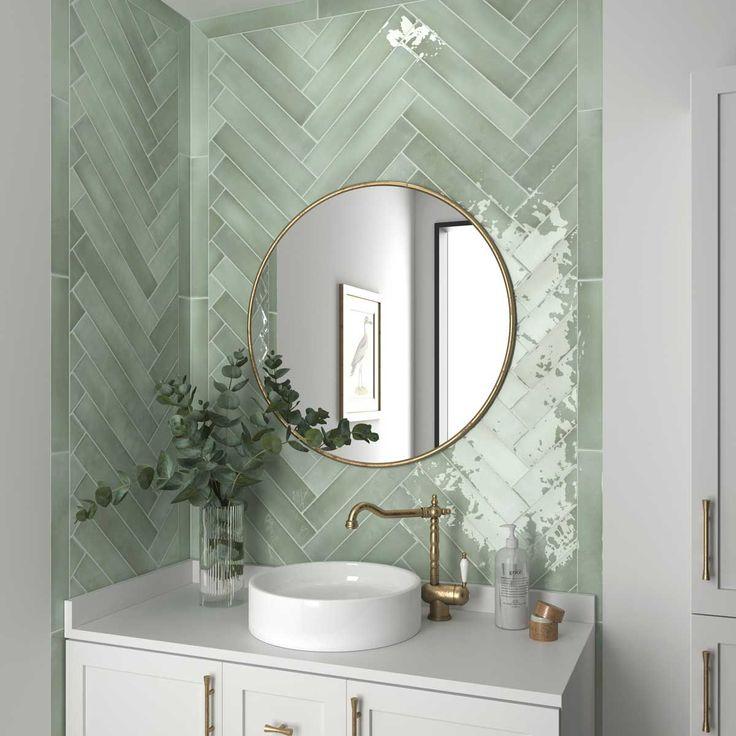
Incorporating indoor plants into your bathroom design can bring a refreshing touch of nature and enhance the overall ambiance. Plants not only add color and texture but also improve air quality, creating a more inviting and relaxing environment.
When selecting plants for your bathroom, consider the humidity and lighting conditions. Many bathrooms offer a warm and humid environment, which is ideal for tropical plants. Options such as ferns, peace lilies, and snake plants thrive in these conditions and require minimal maintenance.
To maximise space, consider using vertical gardening techniques. Wall-mounted planters or hanging pots can create a stunning visual display while keeping the floor area clear. This is particularly beneficial in smaller bathrooms where space is limited.
For a more dramatic effect, consider creating a small indoor garden or a green wall. This can serve as a striking focal point and transform the bathroom into a serene oasis. Choose a variety of plants with different heights, colors, and textures to create visual interest.
In addition to aesthetic benefits, indoor plants can also contribute to a sense of well-being. Studies have shown that being around greenery can reduce stress and promote relaxation, making your bathroom a more enjoyable space.
When incorporating plants into your bathroom, consider the use of decorative pots or planters that match the overall design aesthetic. This can enhance the look of the space while providing a cohesive feel.
21. Floating Shelves
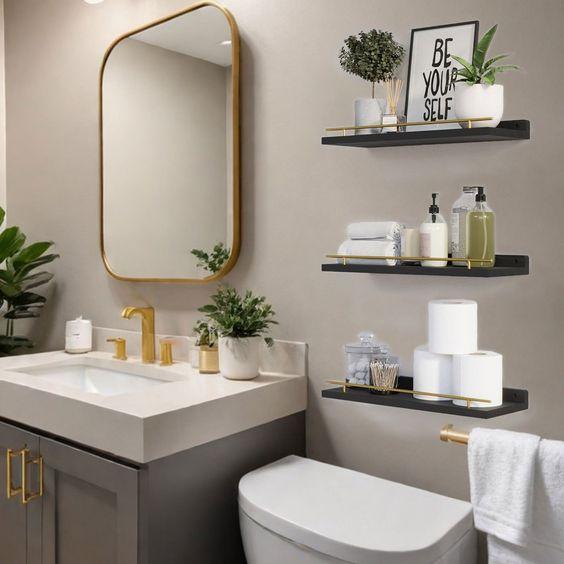 Floating Shelves, Pinterest
Floating Shelves, Pinterest
Floating shelves are a practical and stylish solution for maximising storage in Indian bathrooms. These shelves, mounted directly to the wall without visible brackets, create a clean and modern look while providing ample space for storing essentials and displaying decorative items.
One of the primary benefits of floating shelves is their ability to save floor space. By utilizing vertical space, you can keep the bathroom organized and clutter-free, which is particularly important in smaller areas. Floating shelves can be installed above the toilet, sink, or in corners to make the most of every inch of available space.
When selecting floating shelves, consider the material and finish. Wooden shelves can add warmth and character, while metal or glass options can create a more contemporary feel. Choose a finish that complements the overall design of your bathroom, whether it's rustic, modern, or traditional.
In terms of functionality, floating shelves can be used for various purposes. They are perfect for storing toiletries, towels, and decorative items such as candles or plants. Consider arranging items in a visually appealing way, mixing heights and textures to create interest.
To enhance the design, consider incorporating lighting elements. LED strip lights or small sconces mounted above the shelves can create a warm glow and highlight the items displayed. This adds depth and dimension to the space.
When installing floating shelves, ensure that they are securely mounted to support the weight of the items you plan to place on them. Proper installation will ensure safety and longevity.
22. Vintage Furniture
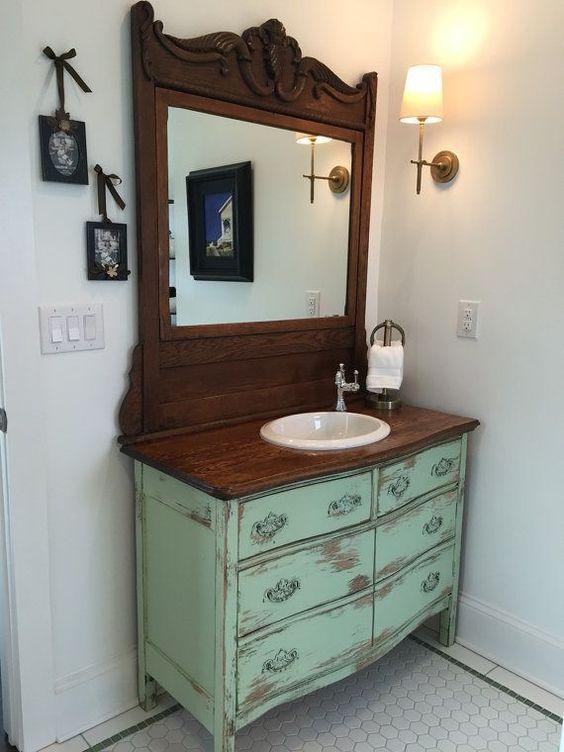 Vintage Furniture, Pinterest
Vintage Furniture, Pinterest
Incorporating vintage furniture into your bathroom design can add character and charm, creating a unique and inviting space. Vintage pieces can serve as focal points while offering practical storage solutions, making them an excellent choice for Indian bathrooms.
When selecting vintage furniture, consider items that complement the overall aesthetic of your bathroom. A vintage dresser can be repurposed as a vanity, providing ample storage and a distinctive look. Look for pieces with intricate carvings or unique hardware to enhance the vintage appeal.
In terms of color, consider refinishing or painting vintage furniture to match your bathroom's color scheme. Soft pastels or bold, rich hues can breathe new life into old pieces while maintaining their character.
To create a cohesive look, pair vintage furniture with modern fixtures and accessories. This juxtaposition can create an interesting design dynamic, blending old-world charm with contemporary elements. For example, a vintage vanity can be paired with sleek, modern faucets and a minimalist mirror.
When incorporating vintage furniture, consider the size and scale of the pieces in relation to your bathroom space. Ensure that the furniture does not overwhelm the area, especially in smaller bathrooms.
Additionally, consider the maintenance of vintage pieces. Ensure that they are treated with appropriate finishes to protect against moisture and wear. Regular care will help preserve their beauty and functionality.
23. Skylights
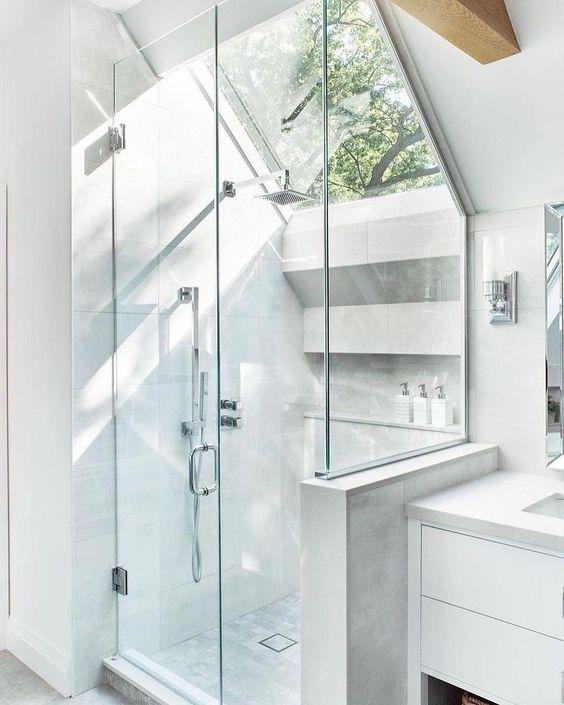 Skylights, Pinterest
Skylights, Pinterest
Skylights are an innovative design feature that can transform any bathroom by flooding the space with natural light. This architectural element not only enhances the ambiance but also creates a sense of openness, making the bathroom feel larger and more inviting.
One of the primary benefits of installing skylights is the ability to bring in natural light, which is especially valuable in bathrooms that may lack windows. Natural light can create a bright and airy atmosphere, reducing the need for artificial lighting during the day and promoting a more sustainable approach to energy use.
When considering skylights, choose designs that complement the overall style of your bathroom. Options range from fixed skylights that provide constant light to venting skylights that can be opened for ventilation. This can help reduce humidity levels, preventing mold and mildew growth in the bathroom.
In terms of placement, consider installing skylights above the shower or bathtub area to create a spa-like experience. This allows you to enjoy the beauty of the sky while bathing, enhancing relaxation and tranquility.
To enhance the design, consider incorporating decorative elements around the skylight. Framing it with wood or adding a decorative trim can create a polished look that complements the overall design aesthetic.
Additionally, consider the use of window treatments or shades for privacy. Translucent shades can diffuse light while still allowing natural illumination, ensuring that your bathroom remains a private sanctuary.
24. Minimal Finishes
Embracing minimal finishes in bathroom design can create a clean and uncluttered look that enhances the sense of space. This approach is particularly effective in Indian bathrooms, where simplicity can lead to an elegant and modern aesthetic.
Minimal finishes involve using a limited color palette and streamlined designs, focusing on functionality without sacrificing style. Neutral colors, such as whites, greys, and beiges, can create a calming backdrop, allowing other design elements to stand out.
When selecting fixtures and fittings, opt for sleek, modern designs with clean lines. Wall-mounted faucets, simple cabinetry, and unobtrusive lighting can all contribute to a minimalist look. Avoid excessive ornamentation or overly complex designs, as these can detract from the overall simplicity.
In terms of materials, consider using high-quality finishes that require minimal maintenance. For example, choose ceramic or porcelain tiles for flooring and walls, as they are durable and easy to clean. Additionally, consider using glass for shower enclosures to maintain an open feel while providing a modern touch.
To enhance the minimalist design, focus on effective storage solutions. Built-in shelves, hidden cabinets, and floating vanities can help keep the bathroom organized without cluttering the space.
Incorporating greenery, such as small potted plants or succulents, can add a touch of warmth and life to the minimalist design without overwhelming the simplicity
25. Soft Lighting
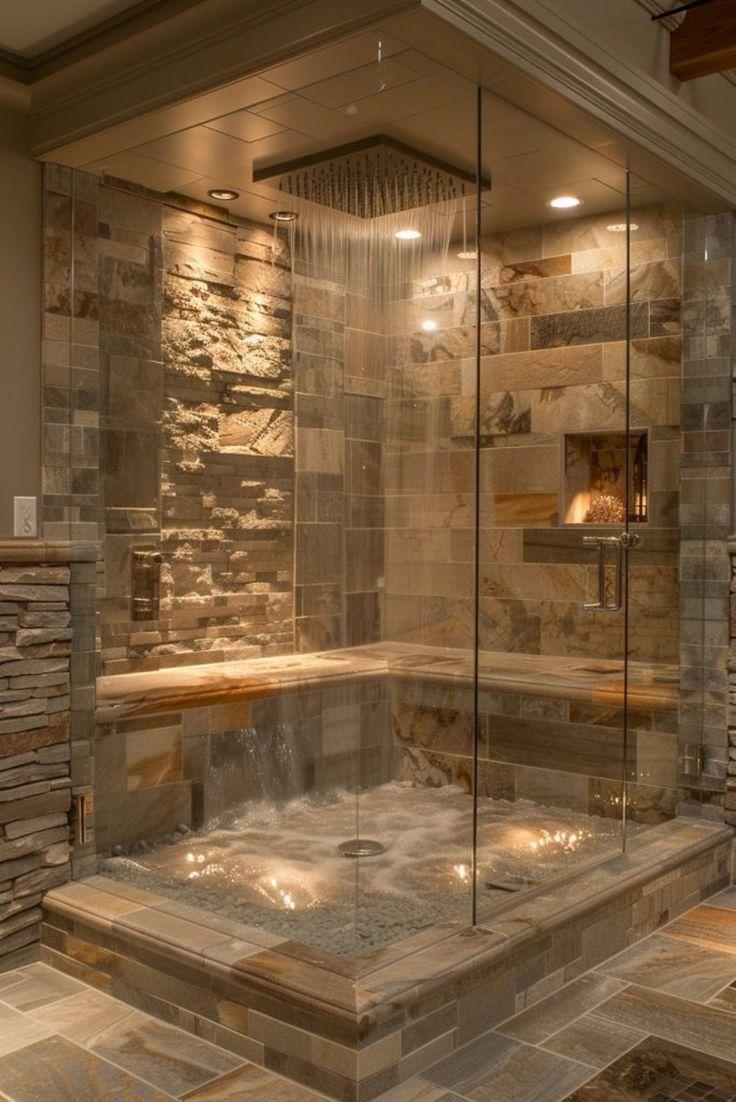 Soft Lighting, Pinterest
Soft Lighting, Pinterest
Soft lighting is a crucial element in bathroom design, creating a warm and inviting atmosphere that enhances the overall experience. In Indian bathrooms, where both functionality and aesthetics are essential, the right lighting can transform the space into a relaxing retreat.
One of the primary benefits of soft lighting is its ability to create a cozy ambiance. Harsh, bright lights can be unflattering and create a sterile environment, while soft lighting promotes relaxation and comfort. This is particularly important in bathrooms, where many people unwind after a long day. To achieve this effect, consider using dimmable fixtures or warm-colored bulbs that emit a gentle glow.
Layering different light sources is an effective way to achieve soft lighting. Combining ambient lighting, such as ceiling fixtures, with task lighting, like wall sconces or vanity lights, can create a well-lit space without overwhelming brightness. For example, installing wall-mounted sconces on either side of the mirror can provide focused illumination for grooming tasks while contributing to the overall ambiance.
Another popular option for soft lighting is backlit mirrors. These mirrors feature integrated LED lights that cast a soft glow, enhancing visibility for tasks like applying makeup or shaving. Not only do they provide functional lighting, but they also add a modern touch to the bathroom design.
Consider incorporating cove lighting as well, which involves installing LED strips along the edges of cabinets or ceilings. This indirect lighting creates a soft, diffused glow that reduces harsh shadows and enhances the overall aesthetic of the space.
In addition to artificial lighting, maximizing natural light is also essential. If possible, incorporate windows or skylights to allow sunlight to filter into the bathroom. Natural light can enhance the feeling of openness and create a more inviting atmosphere.
26. Vertical Tile Layout
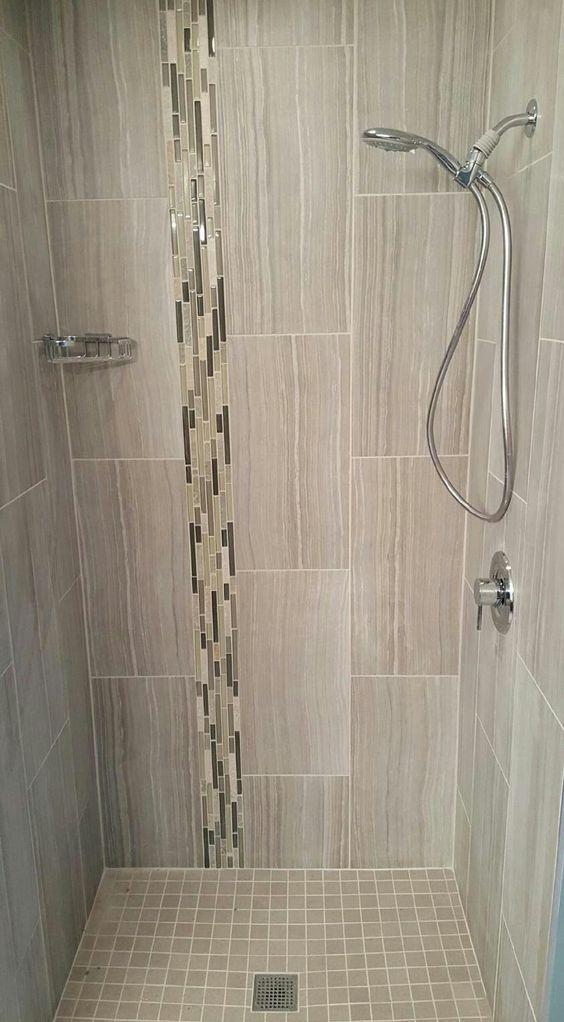 Vertical Tile Layout, Pinterest
Vertical Tile Layout, Pinterest
Using a vertical tile layout can dramatically change the perception of space in an Indian bathroom, making it feel taller and more expansive. This design technique is particularly effective in smaller bathrooms where maximizing vertical space is essential.
Vertical tiles can create a striking visual effect, drawing the eye upward and creating an illusion of height. This is especially beneficial in bathrooms with low ceilings, as it can help counteract the feeling of confinement. To achieve this look, consider using elongated tiles or rectangular shapes arranged in a vertical pattern.
When selecting tiles, consider the material and color. Glossy or light-colored tiles can reflect light, enhancing the feeling of spaciousness. Alternatively, bold colors or intricate patterns can create a dramatic focal point, adding character to the bathroom.
In terms of installation, vertical tiles can be applied to walls in various areas, including the shower, behind the vanity, or as an accent wall. A vertical tile design in the shower area can create a spa-like feel, while using the same tiles behind the vanity can create a cohesive look throughout the space.
To enhance the vertical tile layout, consider pairing it with complementary fixtures and accessories. For example, sleek, modern faucets and minimalist cabinetry can create a contemporary feel, while rustic elements like wooden shelves can add warmth and charm.
Additionally, proper lighting is essential to highlight the vertical tiles. Consider installing sconces or recessed lighting to illuminate the walls, enhancing the visual impact of the tile layout.
27. Mirrored Medicine Cabinet
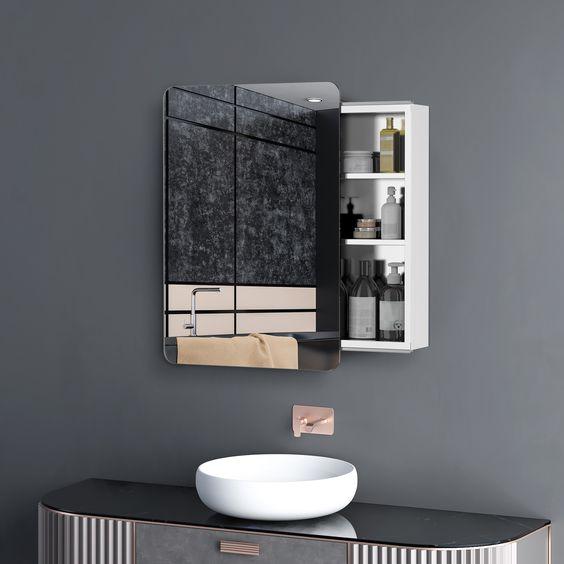 Mirrored Medicine Cabinet, Pinterest
Mirrored Medicine Cabinet, Pinterest
A mirrored medicine cabinet is a practical and stylish addition to any Indian bathroom, providing essential storage while enhancing the overall design. This multifunctional piece combines the functionality of a traditional medicine cabinet with the aesthetic appeal of a mirror, making it an ideal choice for smaller spaces.
One of the primary benefits of a mirrored medicine cabinet is its ability to maximize space. By combining storage and a mirror in one unit, you can free up valuable counter space while keeping essential items organized and easily accessible. This is particularly important in compact bathrooms where every inch counts.
When selecting a mirrored medicine cabinet, consider the size and style that best fits your bathroom decor. Options range from sleek, modern designs with clean lines to more ornate styles that add a touch of elegance. Choose a cabinet that complements your existing fixtures and finishes for a cohesive look.
In terms of functionality, look for cabinets with adjustable shelves or compartments to accommodate various items, from toiletries to medications. Some models even come with built-in lighting, providing additional illumination for grooming tasks.
Installation is straightforward, and many mirrored medicine cabinets can be mounted directly onto the wall. Ensure that the cabinet is securely anchored to prevent it from tipping or falling.
To enhance the design, consider adding decorative elements around the mirrored cabinet. Framing it with stylish molding or incorporating wall art can create a polished look that elevates the overall aesthetic of the bathroom.
28. Shower Niche
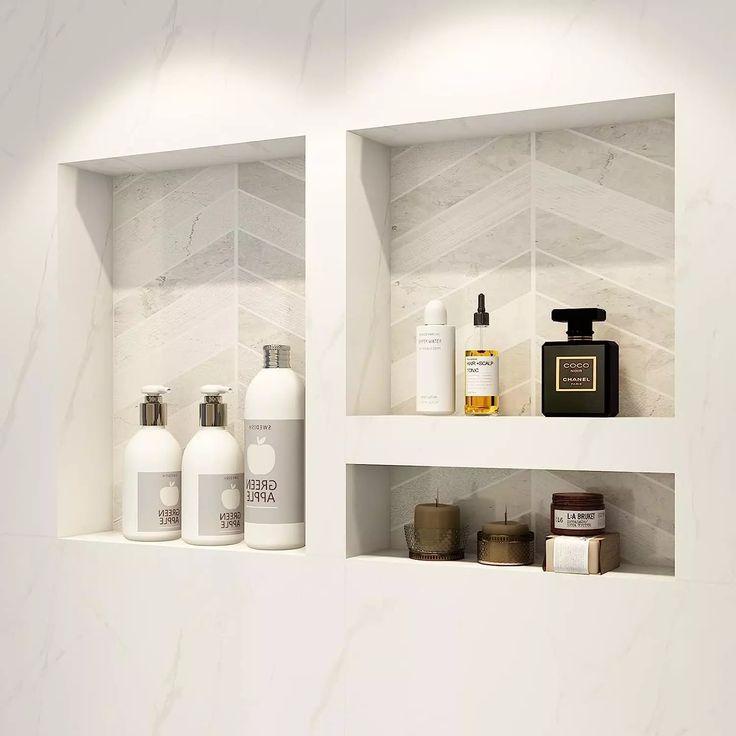 Shower Niche, Pinterest
Shower Niche, Pinterest
Incorporating a shower niche into your bathroom design is a practical and stylish way to enhance the functionality of the shower area. A shower niche provides a dedicated space for storing toiletries, keeping them organized and easily accessible while maintaining a clean and uncluttered look.
One of the primary benefits of a shower niche is its ability to maximise space. Instead of using bulky shower caddies or shelves that take up valuable floor space, a niche can be built directly into the wall. This creates a seamless look and allows for more room to move within the shower.
When designing a shower niche, consider the size and placement. It should be large enough to hold essential items like shampoo, conditioner, and soap, but not so large that it overwhelms the space. A common height for a shower niche is around eye level, making it easy to reach for items while showering.
In terms of materials, consider using tiles that match or complement the rest of the shower area. This creates a cohesive look and can enhance the overall design of the bathroom. You can also use decorative tiles or patterns within the niche to create a focal point.
Proper lighting is essential for a shower niche, especially if it is located in a darker area of the shower. Consider incorporating waterproof LED strips or spotlights to illuminate the niche, making it easy to see and access items.
In addition to functionality, a shower niche can also enhance the overall aesthetic of the bathroom. By keeping toiletries organized and off the floor, you can create a spa-like atmosphere that promotes relaxation and tranquility.
29. Vessel Sink
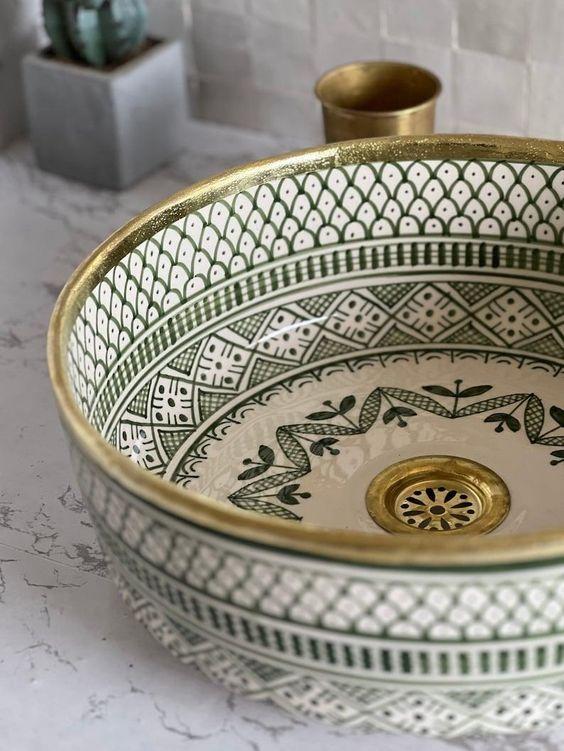 Vessel Sink, Pinterest
Vessel Sink, Pinterest
A vessel sink is a stylish and contemporary choice for Indian bathrooms, offering a unique focal point that can elevate the overall design. These sinks sit above the countertop, creating a striking visual effect and allowing for a variety of design options.
One of the primary benefits of a vessel sink is its versatility. Available in various materials, shapes, and colors, vessel sinks can complement a wide range of bathroom styles, from modern to traditional. For example, a sleek glass vessel sink can create a contemporary look, while a rustic ceramic sink can add charm and character.
When selecting a vessel sink, consider the size and shape that best fits your bathroom space. Round, square, and oval sinks are all popular options, and the choice will depend on your personal style and the overall design of the bathroom.
In terms of installation, vessel sinks require a compatible countertop that can support their weight. Consider using materials like granite, marble, or solid surface that can withstand moisture and provide a sturdy base. Additionally, ensure that the faucet height is appropriate for the sink to ensure ease of use.
To enhance the design, consider pairing the vessel sink with stylish fixtures. A tall, modern faucet can create a striking contrast against the sink, while decorative elements like a matching soap dispenser or towel holder can create a cohesive look.
In terms of maintenance, vessel sinks are generally easy to clean, but it's essential to use appropriate cleaning products to avoid damaging the surface. Regular cleaning will help maintain their beauty and functionality over time.
30. Wallpaper Accent Wall
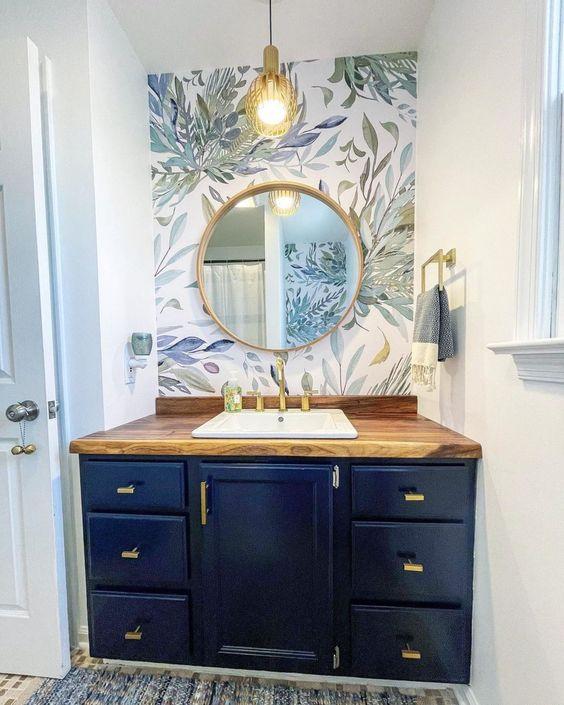 Wallpaper Accent Wall, Pinterest
Wallpaper Accent Wall, Pinterest
Incorporating a wallpaper accent wall in your bathroom design can add a splash of color and personality, transforming the space into a vibrant and inviting area. Wallpaper is a versatile design element that allows for endless creativity, making it an excellent choice for Indian bathrooms.
One of the primary benefits of using wallpaper is its ability to introduce patterns and textures that can enhance the overall aesthetic of the bathroom. From bold florals to geometric designs, the right wallpaper can create a stunning focal point that draws the eye and adds character to the space.
When selecting wallpaper for a bathroom, it's essential to choose materials that are moisture-resistant. Vinyl wallpaper is a popular choice, as it can withstand the humid bathroom environment and is easy to clean. Additionally, consider using wallpaper that is specifically designed for high-moisture areas to ensure longevity.
In terms of placement, an accent wall behind the vanity or in the shower area can create a striking visual effect. This design choice allows you to highlight specific areas while keeping the rest of the bathroom neutral.
To enhance the design, consider pairing the wallpaper with complementary fixtures and accessories. For example, if you choose a bold floral pattern, opt for simple, modern fixtures to balance the look. Alternatively, if the wallpaper features geometric designs, consider incorporating similar shapes in the accessories for a cohesive feel.
Lighting also plays a crucial role in showcasing wallpaper. Ensure that the area is well-lit to highlight the patterns and colors, creating a vibrant atmosphere.
explore further
Latest from Contemporary ideas
More from Innovations
Resources
Dwello, for every home buyer, is a way to go from 'I feel' to 'I know', at no extra cost.




